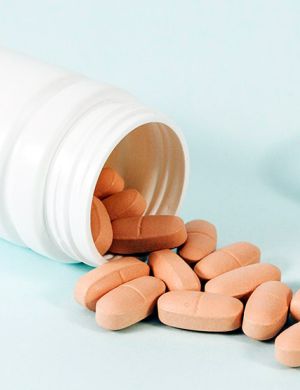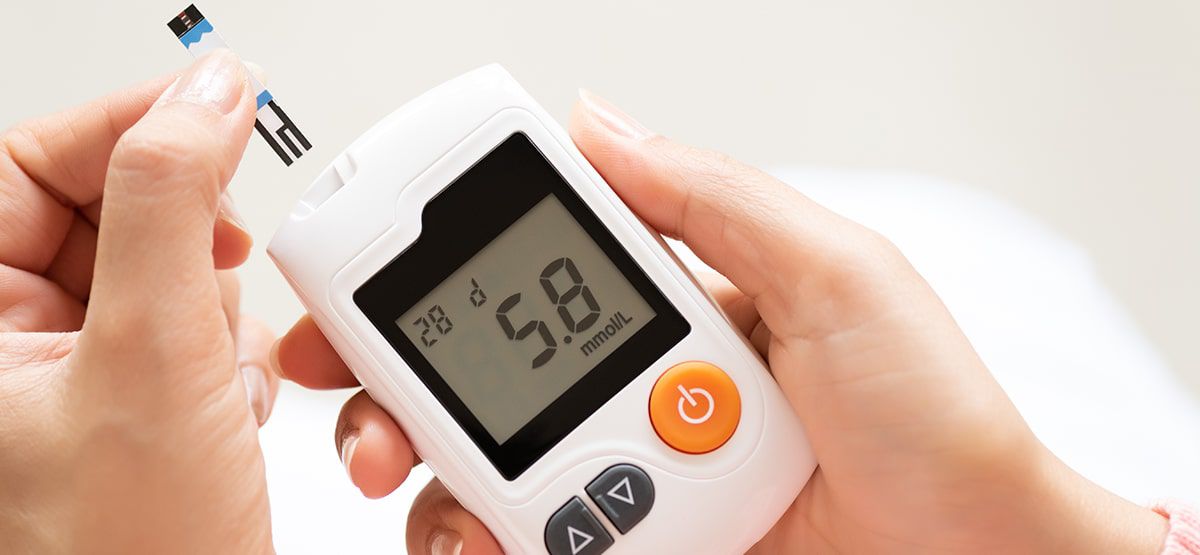
Medical Devices-Asia and ROW Regulatory News-June 2023
ASIA
INDIA (CDSCO)
2023.06.02_MDR_Final G.S.R. 409(E)_Amendment in Rule 18 and 19 for notifying State MDTL
The State Government may, by notification, establish State Medical Devices Testing Laboratory for the purpose of:
(a) Testing and evaluation of medical devices; or
(b) To carry out any other function as may be specifically assigned to it.
The State Government may also designate any laboratory having facility for carrying out test and evaluation of medical devices as State Medical Devices Testing Laboratory for the purposes specified.
Provided that no medical devices testing laboratory shall be so designated unless it has been duly accredited by the National Accreditation Body for Testing and Calibration Laboratories.
NATIONAL MEDICAL DEVICES POLICY, 2023
The Government of India has published plans to streamline the regulation of medical devices as part of its strategy for promoting the sector. Specific plans outlined in the strategy include changes to licensing that are designed to avoid the duplication of efforts and imposition of unnecessary compliance burdens.
The medical devices sector in India is an essential and integral constituent of the Indian healthcare sector. It forms an important pillar in the healthcare delivery system along with healthcare providers, pharmaceuticals and healthcare insurance industry, thereby helping achieve the key objectives of the National Health Policy (NHP), 2017. The medical devices constitute a multi-disciplinary sector, with the following broad classification: (a) Electronic equipment (b) Implants; (c) Consumables and Disposables (d) Surgical instruments and (e) In-Vitro Diagnostic Reagents. Further, there are categories of devices across 24+1 (IVD) sub-categories as per the CDSCO.
CHINA (NMPA)
Announcement of the Center for Device Evaluation of the State Food and Drug Administration on releasing 4 guidelines for the registration review of medical device products, including the guidelines for the registration review of medical needle-free syringes (No. 17, 2023)
This guideline applies to the registration of medical needle-free injector products that rely on pressure to perform needle-free injection functions. Medical needle-free syringes are used for the injection of drugs, and the dynamic energy distribution is transmitted to the drugs through mechanical kinetic energy.
The single-use human arterial blood sample collector specified in this guideline is a passive medical device, usually composed of a sample container, a blood collection needle, a sheath, a seal, and additives. The additives in the container of the arterial blood sample collector are generally heparin substances. Provided sterile, single-use, management category is Class III medical device.
Percutaneous enteral nutrition catheters specified in this guideline are passive medical devices, usually composed of catheters, head-end fixation devices, connectors and other components, and the indwelling time in the body is greater than or equal to 30 days. Catheters are generally made of materials such as silicone rubber or polyurethane. Provided sterile, single-use, management category is Class III medical device
The General Affairs Department of the State Food and Drug Administration publicly solicits opinions on the “Quality Management Standards for Medical Device Operation (Revised Draft)” (Drug Administration Comprehensive Instrument Management Letter [2023] No. 291)
In order to strengthen the quality management of medical device operation, standardize the operation and management of medical devices, and ensure the safety and effectiveness of medical devices, this document is formulated in accordance with the Regulations on the Supervision and Administration of Medical Devices and the Measures for the Supervision and Administration of Medical Device Operations. specification.
This specification is the basic requirement for the quality management of medical device operation. Effective quality management measures shall be taken in the whole process of medical device procurement, acceptance, storage, sales, transportation, after-sales service, etc. to ensure medical device management. The quality safety and traceability of device products in the operation process.
Notice of the General Affairs Department of the State Food and Drug Administration on printing and distributing the “Appendix to the Medical Device Operation Quality Management Regulations: Guiding Principles for Quality Management On-site Inspection of Enterprises Specially Providing Medical Device Transportation and Storage Services” (Drug Administration Comprehensive Equipment Management [2023] No. 44)
The “Guiding Principles” are applicable to the on-site inspection by the drug supervision and management department of the business license (including change and continuation) or business filing of enterprises specializing in the transportation and storage of medical devices, as well as the daily supervision and inspection of such enterprises. During the inspection, the enterprise shall inspect the implementation of the “Appendix to the Specification” in accordance with the inspection items in the “Guiding Principles” and the corresponding key inspection contents. Enterprises that specialize in providing medical device transportation and storage services can determine reasonable missing items based on their business scope, business varieties, etc., and explain the reasons in writing, which will be confirmed by the inspection team.
Notice of the Center for Device Evaluation of the State Food and Drug Administration on the release of the guidelines for the registration and review of two medical device products including recombinant collagen wound dressings (No. 16, 2023)
Recombinant collagen wound dressings managed as Class II medical device, whose structure contains recombinant collagen components (excluding collagen components extracted from animal tissues), and used for non-chronic wounds and their surrounding skin care. Products are usually in the form of gels, liquids, patches, ointments, etc., including single-use products and products that can be used multiple times after opening, and are provided in sterile or non-sterile forms. The ingredients contained in the product do not have pharmacological effects and cannot be absorbed by the human body. If the classification and attributes of the product are not clear, it is necessary to apply for the classification and attribute definition of the product.
Recombinant humanized collagen is a full-length or partial amino acid sequence fragment encoded by a specific type of human collagen gene prepared by DNA recombination technology, or a combination containing functional fragments of human collagen.
Recombinant humanized collagen is only a type of recombinant collagen, and the material properties cannot completely determine the safety and effectiveness of the final product. The ” raw material ” in this guideline refers to the recombinant humanized collagen material used in the production of medical devices. Unless otherwise specified, “material” in this guideline is equivalent to “raw material”.
Recombinant humanized collagen is a protein produced through genetic engineering. The engineering cell construction process, quality control of production cells and routine production process control are the basis for the raw material production process and risk assessment. The main verification data in this regard can be found in The informative appendix of this guideline is a supplement to the raw material research materials, but not a necessary content of the product registration application materials. Combined with the characteristics of recombinant humanized collagen, this informative appendix is modified to quote the “General Principles of Mammalian Cell Quality Control Technology Evaluation for the Production of Recombinant Products” and “Technical Guidance for Pharmaceutical Research and Evaluation of In Vitro Gene Modification Systems” by the Center for Drug Evaluation of the State Food and Drug Administration. “Principles” and other relevant content of the Guiding Principles for Biological Products.
Notice on Soliciting Information of Participating Units in the Formulation of Two Guiding Principles for Registration and Review of Medical Device Registration and Review
According to the 2023 guideline preparation plan, to further improve the technical review of related products, our center has started the compilation of the “Guidelines for the Registration and Review of Disposable Indwelling Cannulae” and “The
Guidelines for the Registration and Review of Hydrogel Dressing Products”. Participating units in the preparation work are now being recruited, and domestic and foreign production enterprises, scientific research institutions and other relevant units with relevant experience are invited to actively participate.
Notice on Public Solicitation of Opinions on 7 Guiding Principles for Registration and Review of In Vitro Diagnostic Reagents, including “Guidelines for Technical Review of Estrogen Receptor, Progesterone Receptor Antibody Reagents and Detection Kits
The “Guidelines for Technical Review of Estrogen Receptor, Progesterone Receptor Antibody Reagents and Detection Kits” has now been launched. It is hoped that the production enterprises that have relevant product development, production or registration declarations will actively participate in the revision of the 7 guiding principles. In order to facilitate contact and communication, information on relevant production enterprises is now collected from domestic and overseas.
Notice on Soliciting Information of Relevant Enterprises and Units Participating in the Revision of 6 Guiding Principles Including “Guiding Principles for Registration and Review of Absorbable Surgical Sutures (2023 Revision)
The guiding role of the guiding principles of medical device registration review in the registration application and technical review work, according to the relevant requirements of the 2023 annual registration review guiding principle preparation plan of the Center for Medical Device Evaluation of the State Drug Administration, our center has launched “Guidelines for Registration Review of Absorbable Surgical Sutures (2023 Revision)”, “Guidelines for Registration Review of Absorbable Anti-adhesion Products for Abdominal and Pelvic Surgery (2023 Revision)”, “Registration Review of Absorbable Hemostatic Products Guiding Principles (Revised in 2023), “Guidelines for Registration and Review of α-Cyanoacrylate Medical Adhesives (Revised in 2023)”, “Guidelines for Registration and Review of Disposable Hemodialysis Tubing (Revised in 2023) Version) “, “Guidelines for Registration and Review of Disposable Hydrocephalus Shunts (2023 Revision)” and other six guiding principles. Participating units of the revision work are now being solicited, and domestic and foreign production enterprises, scientific research institutions, clinical institutions, etc. with relevant work experience are invited to actively participate.
PAKISTAN (DRAP)
SRO.649(I)/2023: MRP fixation of Cardiac Stents
DRAP of Pakistan has notified regarding the maximum retail prices of cardiac stents.
The Drug Regulatory Authority of Pakistan with approval of the Federal Government, in exercising its powers conferred by sub clause (vii) of clause (c) of section 7 of the Drug Regulatory Authority of Pakistan Act2012 (XXI of 2012) read with section 1 2 of the Drugs Act, 197 6 (XXXI of 197 6) has notified the maximum retail prices of cardiac stents.
SINGAPORE (HSA)
HSA’s SRA status for in vitro diagnostic medical devices (IVD)
HSA is now recognized as a WHO stringent regulatory authority (SRA) for high risk in vitro diagnostic medical devices (IVD).
An SRA is a national health products regulatory authority considered by the WHO to apply stringent standards for quality, safety, and efficacy in its process of regulatory review of health products for marketing authorization. With HSA being recognized as an SRA for Class C and Class D IVDs, these classes of IVDs registered with HSA qualify for abridged prequalification assessment by WHO. This is a significant testament of the quality and robustness of HSA’s scientific evaluation of IVDs.
HSA being recognized as an SRA for such IVDs may be beneficial to medical device companies. Major international purchasers, e.g. the United Nations agencies, rely on the listing by the WHO Prequalification Program. Hence, IVD manufacturers that register their IVDs with HSA may be able to use HSA’s SRA status to gain expedited listing under the WHO prequalification program, and as a springboard for faster access to various markets beyond Singapore.
HSA is committed to being a trusted and choice regulator for our stakeholders. We seek your continued support as we work to safeguard and advance public health in Singapore and beyond.
Consultation on GN-14 Guidance on the Risk Classification of In Vitro Diagnostic Medical Devices
This guidance is applicable to IVD device products that fall within the definition of an IVD medical device as defined in First Schedule of the Health Products Act (Act). This document provides guidance to assist product owners in risk classification 36 of in vitro diagnostic (IVD) medical devices using the appropriate risk 37 classification rules
Regulatory controls should be proportional to the level of risk associated with an in vitro diagnostic (IVD) medical device. The level of regulatory control should increase with increasing degree of risk, taking account of the benefits offered by use of the IVD medical device. Therefore, there is a need to classify IVD medical devices based on their risks to patients, users and other persons.
The risk presented by a particular IVD medical device depends substantially on its intended purpose and the effectiveness of the risk management techniques applied during design, manufacture and use. The risk presented by an IVD medical device also depends, in part, on its intended user(s), its mode of operation, and/or technologies.
MALAYSIA (MDA)
Third Edition Guidance Document MSA/GD/0033: Medical Face Mask and Respirator
This guideline intended to provide clarification on medical face masks and respirators that are regulated under the Medical Device Act (Act 737). This document is applicable to establishments, healthcare facilities, and public dealing with medical face mask and respirators.
They are many types of masks that are available in the Malaysian market that offer a range of protection against potential health hazards. Face masks and respirators are regulated as medical devices if there are claims or descriptions by the manufacturer that makes the mask or respirator a medical device as defined in Section 2 of Act 737
According to World Health Organization (WHO), medical face mask was divided into two categories, which is procedure mask and surgical mask. Both, are used in clinical/health care setting. This guidance document will specify the requirements for both face mask/respirators.
Medical Devices Not Registered on the Market
The Medical Device Authority (MDA) continuously carries out market surveillance. Apart from that, MDA also ensures that medical devices available in the Malaysian market are only registered and from licensed sources
The use of unregistered medical devices is extremely risky because the safety and performance of the medical device cannot be verified. In relation to that, the public and parties involved are encouraged to check the registration status of a medical device first before purchasing.
Medical Devices Not Registered on the Market
A complaint has been received regarding the use of a medical device not registered under Act 737 by a center that carries out chiropractic and physiotherapy treatment. A preliminary investigation found that the company provided chiropractic and physiotherapy services through advertisements on Facebook using medical devices to assist with treatment.
An inspection was carried out by 3 MDA Enforcement Officers to obtain confirmation of complaints around Kuala Lumpur on 30 January 2023. The inspection results found that the medical device Xavant Stimpod NMS 460 Stimpod Stimulator, Electrical Stimulator does not have a valid registration under Act 737 and is used in the center the health treatment.
Announcement of the Transition Period for the Implementation of the Use of Electronic Medical Device Registration Certificate
The Medical Device Authority (MDA) will implement the use of medical device registration certificates electronically from 2 May 2023. The establishment can download the medical device registration certificate from the MeDC@St2.0+ system after the application is completed (status complete). and payment of the registration fee has been cleared.
Both physical and electronic medical device registration certificates can be used for the purpose of importing or placing medical devices in the Malaysian market. The transition period for the use of the physical medical device registration certificate to the electronic medical device registration certificate is until December 31, 2023. During this transition period, the establishment will receive the physical medical device registration certificate according to the existing process and at the same time the electronic medical device registration certificate can be downloaded from the MeDC@St2.0+ system. In order to launch this transition process, the establishment is required to collect the physical medical device registration certificate at the MDA office after 21 working days from the date the application is completed (status complete).
The use of electronic medical device registration certificates will be fully implemented from 1 January 2024 and no more physical medical device registration certificates will be issued by MDA.
KAZAKHSTAN (NDDA)
Amendments have been made to the Rules for selecting medicines and medical devices from the market
The above order amended paragraph 4 of the Rules in terms of excluding the limitation of the terms for concluding an agreement between the manufacturer of the products included in the selection plan and the expert organization. Also, clarifications were made regarding the terms of consideration and conclusion of the contract by the expert organization and revision and adjustments to the sampling schedule.
HONG KONG (MDD)
Department of Health to implement a new strategy on procurement of medical devices
The procurement of medical devices (MDs) conducted earlier by the Department of Health (DH), DH will adopt a new strategy on the procurement of MDs starting from 21 June 2023. Under the strategy, DH will give preference to MDs listed under the Medical Device Administrative Control System (MDACS) in the procurement of all applicable MDs. The new strategy will help to intrinsically ensure that the MDs being purchased by DH will meet the safety, quality and performance requirements comparable to international standard. Furthermore, the safety alert monitoring mechanism and the Medical Device Adverse Event Reporting System of Medical Device Division (MDD) also provide additional protection to the public health.
Traders who are interested in submitting bid/ quotation/ tender for the supply of MDs to DH Services are encouraged to apply their Class II/III/IV general MDs or Class B/C/D in-vitro diagnostic MDs for listing under the MDACS as soon as possible.
Application form and guidance notes for listing under MDACS are available on MDD website.
Please refer to individual invitation documents issued by DH for details of other procurement requirements.
For enquiries on the definition and classification of MDs, please contact MDD:
Tel: 3107 8484
Fax: 3157 1286
Email: mdd@dh.gov.hk
ROW
TURKEY (TMMDA)
Product Tracking System (ÜTS) Applications in Line with the Regulation on the Amendment of the Medical Device Sales, Advertisement and Promotion Regulation
The provisions regarding the centers that sell the devices in Annex-3 have been amended.
Except for the manufacturer or importer, a certificate of authorization is not required for the places where the devices in Annex-3 are sold. This exception does not remove the obligations determined by other relevant legislation.” In line with the provisions of the provision, companies that will register as “Manufacturer/Importer/Dealer/Exporter” in the Product Tracking System (ÜTS) must have a medical device sales center license, and the ÇKYS number must be entered mandatory during the company registration. The purpose of this document is to define and clarify the import and clearance requirements for medical devices and supplies.
After the aforementioned date, the records of companies registered in ÜTS that do not have ÇKYS numbers will be deactivated.
TCOKKA – Guidance on Consultation Procedures Specified in the Medical Device Regulation
In this context, in order to inform manufacturers and notified bodies about the different combinations of human medicinal products and medical devices, the classification of these product groups and the regulations they are subject to, to provide guidance to the general principles regarding the relevant consultation procedures, and to determine the procedures and principles regarding the request for scientific opinion.
BAHRAIN (NHRA)
Circular no (15) 2023 To All medical device importers and Healthcare facilities
Medical Device Incidents Reporting
Pursuant to Decision (48), On Medical Devices and Products’ Quality Control, Article (11) which states that “The Authority reviews and checks the alerts received by its Medical Devices and Products reporting Center and takes the necessary measures to ensure the safety of public health, and when needed, issues field safety notices to educate users of the medical device and product to the relevant patients, and also review the text and content of the alerts with the medical device and product manufacturer or authorized representative before issuing the alert, and in light of NHRA role in regulating and monitoring the safety of medical devices during the post market phase, NHRA urges healthcare facilities to report medical devices incidents directly to NHRA or to the authorized representative or the distributor where the device has been bought from in order to take the necessary actions and to ensure the safety of patients and end user.
Circular no (14) 2023 To All Medical Devices Importers
The National Health Regulatory Authority would like to alert all Medical Devices importers that HS Code 38221900 (009) is now regulated under the Medical Devices Regulations department. However, in order to ensure all required documents are available with the importer, grace period will be granted where applicants can obtain an approval for the shipment by only attaching the invoice, while fulfilling the Fees calculation procedure explained in the Importation Guideline available on NHRA website.
SAUDI ARABIA (SFDA)
Requirements on Importation and Shipments of Medical Devices
The purpose of this document is to define and clarify the import and clearance requirements for medical devices and supplies. This document applies to medical devices and supplies and their accessories to be imported.
AUSTRALIA (TGA)
Medical device patient information leaflets and implant cards
This guidance provides an overview of the different types of patient information materials (patient information leaflets and patient implant cards); when patient information must be supplied; how to meet the mandatory requirements for patient information; and best practice requirements for patient information.
The purpose of this guidance is to help manufacturers and sponsors understand how the TGA interprets the legislative requirements for patient information materials (patient implant cards and patient information leaflets) and thus understand how they can comply with the legislative requirements.
This is a guide only; manufacturers and sponsors should familiarize themselves with the legislative and regulatory requirements and, if necessary, seek professional advice.
It is the responsibility of sponsors and manufacturers to understand and comply with these requirements
Guidance on applying the Advertising Code
This guidance provides for when the Code applies to advertising, and that advertising must meet requirements including briefly that it is accurate, balanced, not misleading, is substantiated, and encourages the safe and proper use of therapeutic goods.
Regulatory framework for personalized medical devices: Frequently asked questions
The Therapeutic Goods Administration (TGA) has compiled these frequently asked questions to provide further clarity on the regulatory framework for personalized medical devices. This document should be read in conjunction with the guidance document Personalized medical devices (including 3D-printed devices): Regulatory changes for custom-made medical devices.
Reclassification of active implantable medical devices (AIMD)
This guidance aims to assist sponsors of active implantable medical devices (AIMD) with meeting their obligations and outlines transitional arrangements to help comply with new regulations.
From 25 November 2021 active implantable medical devices will be required to be reclassified from Class AIMD to Class III.
In early 2019 the Therapeutic Goods Administration (TGA) conducted a public consultation seeking feedback on a proposal to reclassify active implantable medical devices and their accessories. The proposed regulatory changes supported the commitment made in the Australian Government Response to the Review of Medicines and Medical Devices Regulation to align Australian medical device regulations, where possible and appropriate, with the European Union framework.
Stakeholders who responded to the public consultation were broadly supportive of aligning the Australian medical devices framework with the EU framework; however, there were diverse views regarding the proposal to reclassify accessories to active implantable medical devices.
Don’t miss out! Click here to stay in touch.
Categories
- Biopharma (58)
- Consumer Health (21)
- Cosmetics (11)
- Diagnostics (5)
- Digital Health (8)
- Food (2)
- Medical Device (112)
- OTC (5)
- Regulatory Intelligence (13)
- Standards (41)
Recent Blogs
Get the latest updates from Vistaar

Related Posts
CONNECT WITH US

Let's talk about how Vistaar can help you




